Making Florals More Modern
This week, we are making florals more modern! So, when you want to get away from a botanical look, and draw and paint flowers that are more abstract and expressive, here are my tips for you!
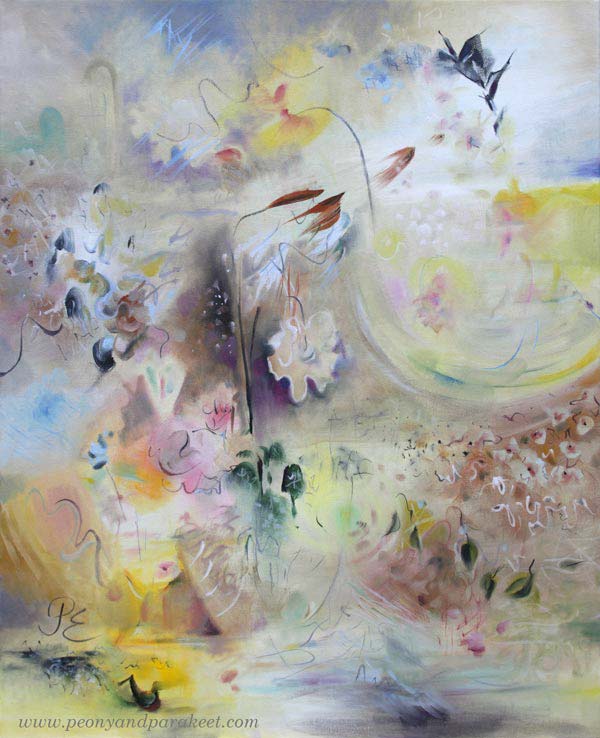
In my recent painting Gossamer, I have stretched my style to a modern direction. The painting was born much faster than usually if you count the actual painting time only. But that’s not the whole truth because I practiced this style several times. You too, can make your florals more modern in this way!
#1 Choose Your Muse!
Pick a painter that has a modern abstract style for flowers.
My choice was Helene Schjerbeck (1862-1946). She was a famous Finnish modernist, and even if I find many of her paintings a bit too melancholic, her style fascinates me.
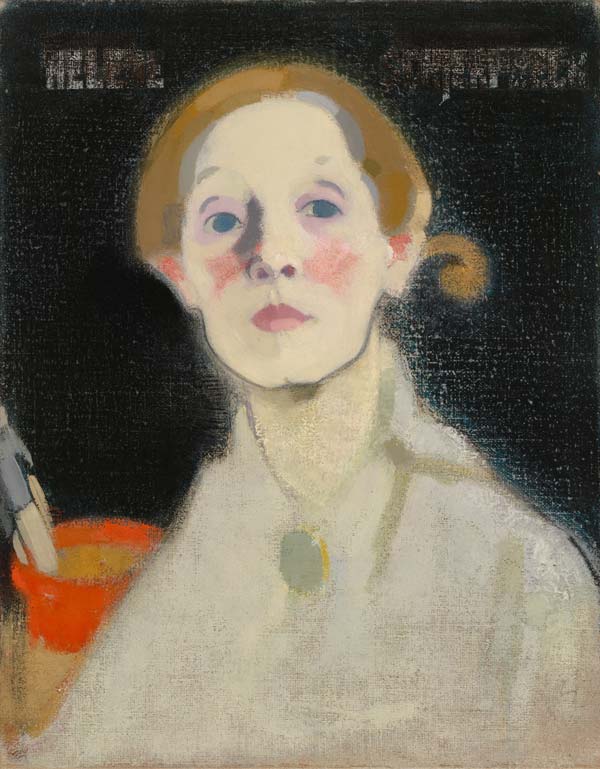
Helene is more of a portrait painter, but she also painted many still lives. (By the way – I also have a blog post about mimicking Helene Schjerfbeck’s style in portraits in colored pencil.)
#2 Make Many Tiny Sketches on One Page
Paint or draw small sketches where you pick ideas from your muse’s paintings. Combine many paintings on one page. When the size is small, you need to simplify and thus, find the core of your muse’s modern style.

I examined several Helene Schjerfbeck’s paintings in watercolor and combined them on one art journal page.
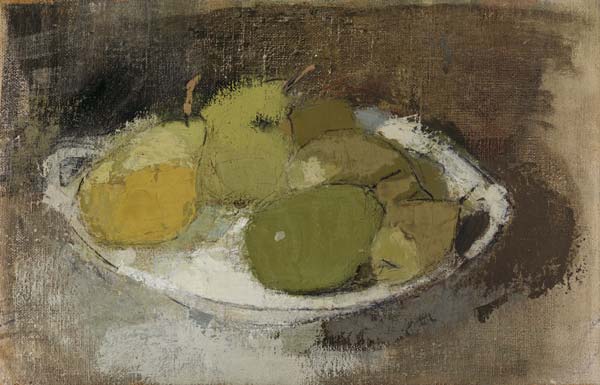
Focus on the shapes and lines and answer to these questions while working:
- Are the muse’s shapes light or heavy?
- How angular are the single strokes?
- How light and shadows are expressed?
- Where can you find playfulness and creativity?
Helene Schjerfbeck’s shapes are rather heavy, and her strokes are quite angular. The light and shadows are treated like they are objects as well. The result is a puzzle where the material and immaterial are treated identically.
I didn’t first think that Helene’s paintings are playful, but when I browsed more of her paintings, I started to see humor in the way she painted the shadows. There is something human in their shapes. It is shown brilliantly in this piece “Trees and Sunset.”
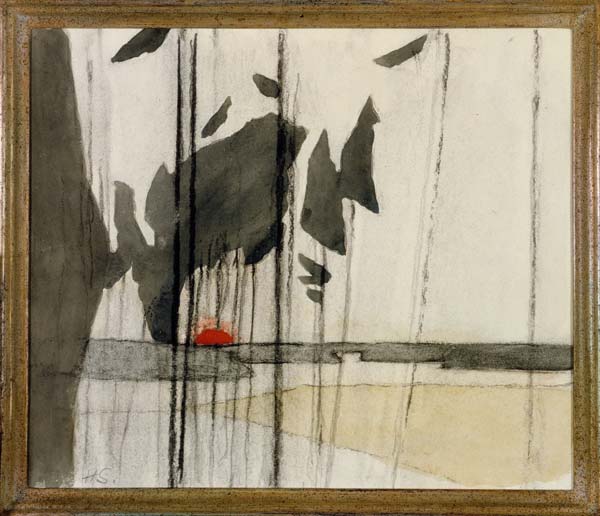
I started to think that maybe for my muse, the shadows were like animals, or dolls, and that they could be a little like toys in my paintings too.
#3 Create a Bigger Study More Freely
Next, use your observations to create a bigger study. Work freely and mix the observations with your original style.

I used left-over oil paints and made this spread for my Dylusions Creative Journal. I really like how playful the shadows are, and painting this was a lot of fun!
In the detail pic below, you see how angular my strokes are.
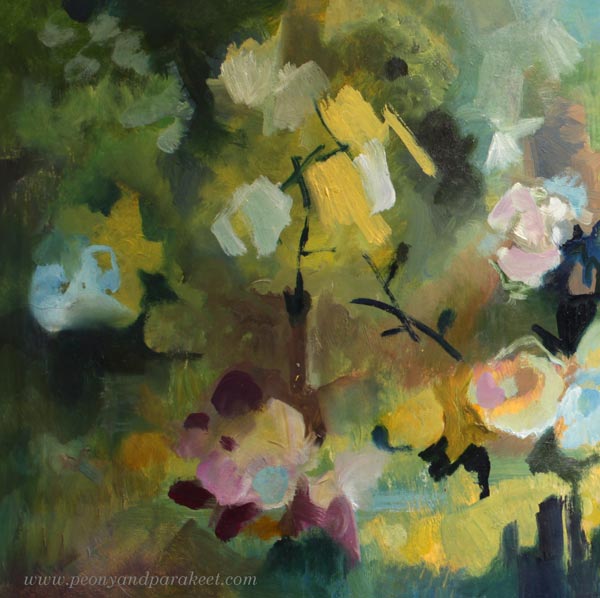
When searching for images for this blog post, I found this small painting from Helene Schjerfbeck. My flowers are different, but still there are similarities as well.

My best tips for making florals more modern:
- While working, think about surface patterns in interiors and clothing rather than the actual flowers.
- Use angular strokes to build puzzle-like compositions.
- Similarly to the parts of the colorful flowers, see the shadows and light as the shapes of the puzzle.
#4 Make the More Modern Piece
After practicing, you can now create a piece where you spend more time for finishing. Modern strokes often appear quick and careless, but they are still packed with aesthetics and style. Those kind of strokes can take a lot of attention and focus.
Here’s a pic from the early stage of my painting Gossamer. I started with a narrow color scheme, and many of the shapes and strokes were more like suggestions – a whispering start, you could say!
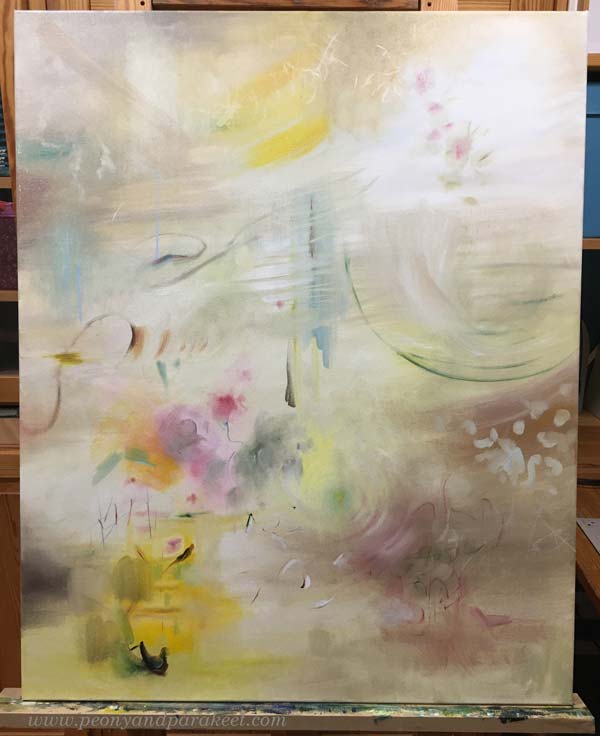
In the finished piece, I especially enjoy the playful color changes in the background and the new playfulness is present in lines too.

#5 Old and New – Compare!
Here you can see my previous painting of the same size and the finished Gossamer side by side. The styles of the two paintings are slightly different, but not totally!
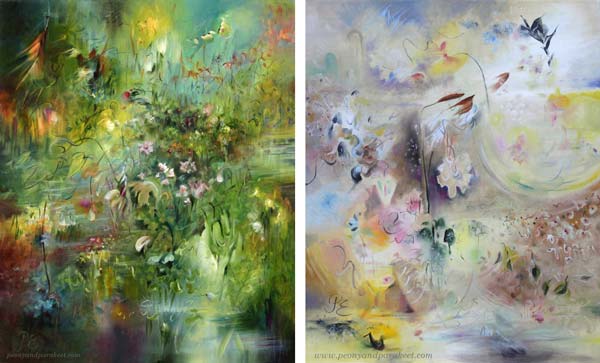
I used leftover paints for these two miniature paintings. The one on the left is more of my original style, the other one is more modern.
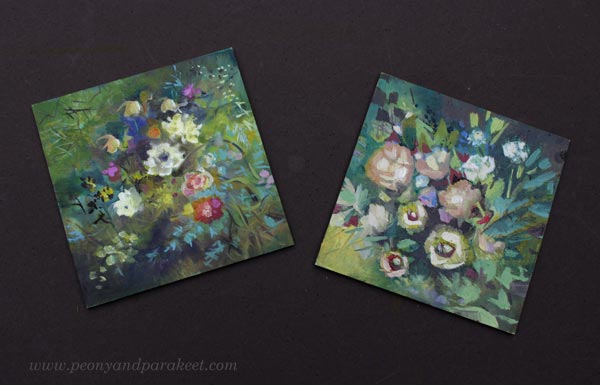
If the weather allows, I always take the photo of the final piece outdoors. This fall has been exceptionally long and warm. There are still leaves in the apple tree, and it’s November!
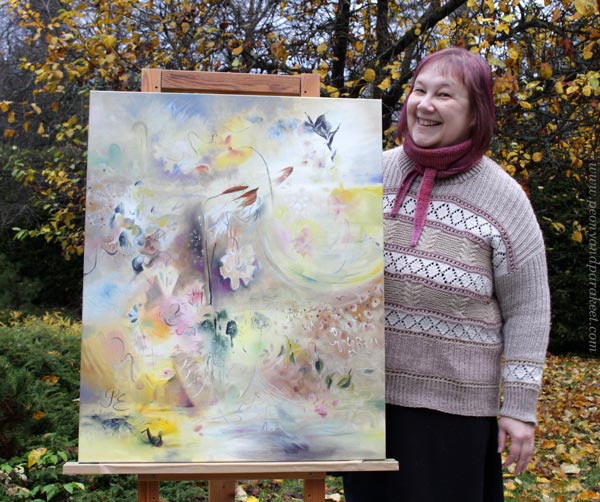
I hope you enjoyed this little tutorial on how to make florals more modern!
Following the Inner Color
Here is my latest completed oil painting “Elixir.” I start my abstract paintings with the idea that I follow an inner color.

Color Chooses Color
The inner color is the color I feel drawn to, so I tend to pick and mix the first colors intuitively. And then, they wish for other colors to accompany them.

Colors also evoke shapes, and the shapes bring in more colors. A raw and bright color selection changes slowly to a more sophisticated one. In this color-driven technique, the inner color changes as the painting matures.

I try to give my painting enough time to find its own soul and paint several sessions, letting the paint dry between them.
First a Child, Then a Teenager
When the painting is only a child, I don’t care about the composition or what it will represent. I don’t want to force a short childhood or early adolescence. When puberty begins, it’s tempting to call the painting finished. But only then does she begin to find her own, unique mission and get prepared for a long life.
Teenagers often tell how they want to be called. When this painting was still unfinished, she was Ophelia because she saw herself as John Everett Millais’s painting from the 19th century.

I usually give the final name only when the painting is almost finished. Then I know what I want to emphasize with the name. Maybe we humans should get our final name a little later too?
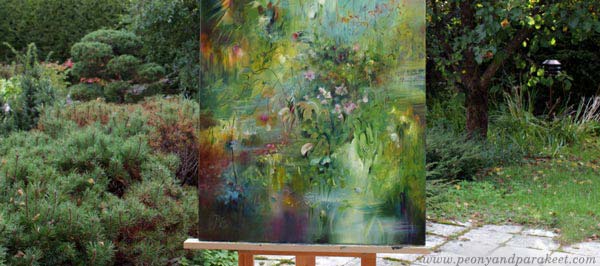
Early Goodbye
I take pictures of my canvas paintings outside if possible, because that’s where the light is most natural. My husband often acts as my assistant and holds the painting against the wind. Most of the time, I end the photoshoot by saying to him, “Hey, come take a picture of us together!”

Since I sell all my paintings, this is the moment when I’m saying a mental goodbye to them. I assure them: “You’ll be fine. Everything’s going to be fine.” Even though I often miss my paintings, I don’t tell them. I feel like their mission is bigger than mine, and my job is to deliver all this for others, not for myself.
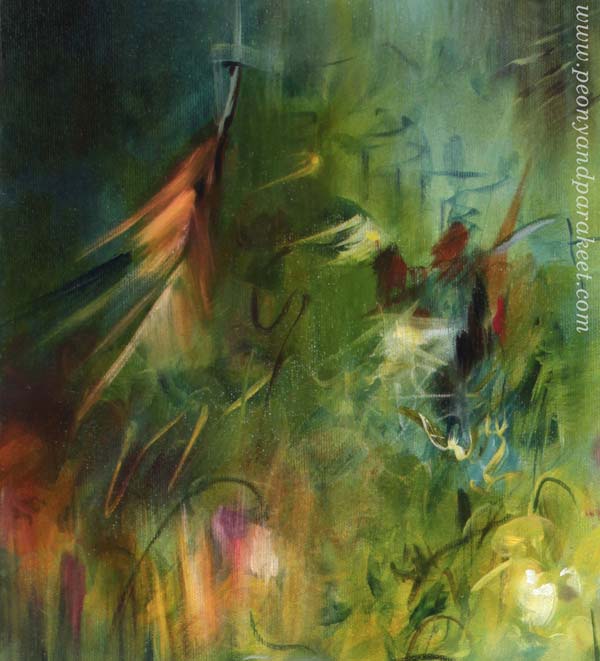


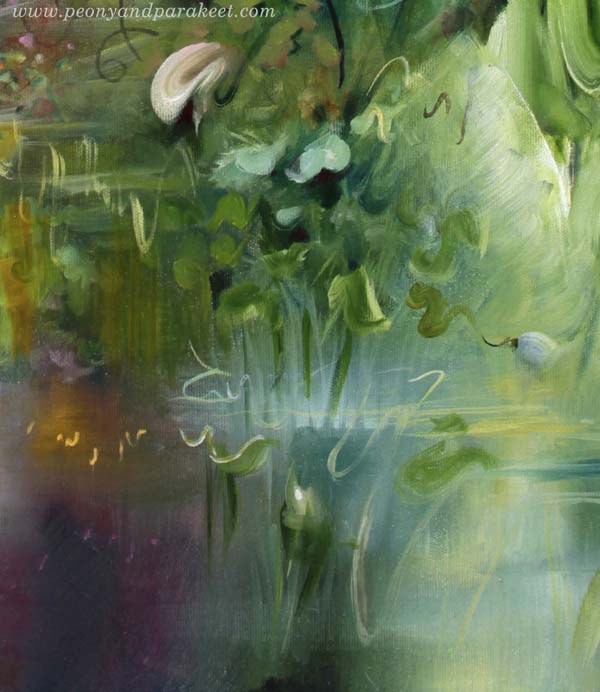
I have practiced most of my oil painting techniques in a quicker medium, so in watercolor!
Wild Garden – You Can Still Hop in!
In Wild Garden, we will paint freely, intuitively, and expressively in watercolor from Sept 22 to Nov 14. We will begin with floral greeting cards and gradually move forward in expression.

The course has just started but you can still hop in!
>> Sign up now!
Sneak Peeks at the Watercolor Course Wild Garden

The new watercolor course Wild Garden will start next week! Exciting! I have been working on this course since the beginning of June and have tried to make it my best course ever. >> Sign up here!
I recorded the intro in various places in our garden on a sunny day last month.

There is a variety of projects, big and small, and I also share some short technique practices.

My goal is that you feel like you are sitting right beside me, and we are creating together at my home.

We will create freely so that you won’t be accurately copying my piece, but you get techniques, tips, and ideas so that your painting grows with mine.

There are practices that grow your skills for making the paintings beautiful.

We examine light, shadows, hope, and mysteries that can be found in a garden and in nature in general.

Bold strokes are combined with thin and more delicate ones.

And of course, we play with color and let water also make the blooms.

Wild Garden – Sign Up Now!
This is the watercolor course who loves nature and flowers. In Wild Garden, we will paint freely, intuitively, and expressively from Sept 22 to Nov 14. We will begin with floral greeting cards and gradually move forward in expression. The projects are fun, and I will be there in the videos even more present than ever.
>> Sign up now!

Watch the inspiring video and sign up now!
Our Garden in Watercolor
This week, I tell about our garden and share my watercolor paintings that have been influenced by it.

We create something like this in the course Wild Garden!
We bought our current house in the fall of 2011. We had had small terraced yards before so at first, we didn’t pay much attention to the yard and mostly focused on the house.
However, the big lawn slowly turned into a garden when my husband and I started adding plants.

See how I made this!
And now when I look back at my art years later, plants slowly started to take over there too. We bought the house, but it was the surrounding yard that changed us.
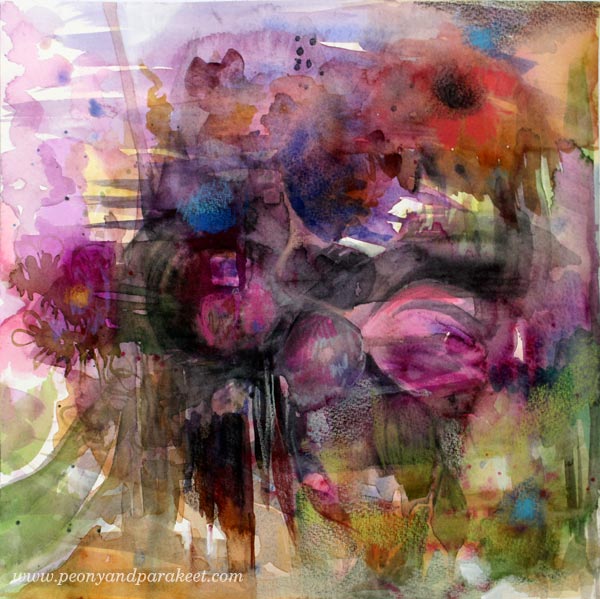
See how I made this!

Big Changes
My husband really got into gardening and in 2018 he made his long-time dream come true when the front yard was transformed into a Japanese garden.

In 2023, the backyard got a bigger makeover when my husband built a pond and the boring lawn was transformed into a pergola with English-style plantings and meadows.


See how I made this!


We create something like this in the course Wild Garden!
Local Nature and Watercolor
The words “English” or “Japanese” don’t describe our garden as well as “forest” and “water.” Our garden is a mix of external influences and Finnish nature. We have pines, birches, and wild flowers too.

We create something like this in the course Wild Garden!
There is water – not only in a pond loved by small birds – but we also have a stone water bowl “tsukubai”, and an imaginary water area built of sand.

See how I made this!
Our garden has a couple of berry bushes, strawberries for birds, two apple trees and a cherry tree, but it cannot be called a vegetable garden.

See how I made this!

See how I made this!
The front yard is dominated by conifers and flowers such as a huge hydrangea and many peonies and roses. The backyard has grasses and flowering perennials.

See how I made this!

See how I made this!
Garden in Watercolor
The garden is my husband’s artwork, but for me, weeding and planting is not enough, I need brushes.

See how I made this!
By painting, the story of a place changes to a more personal story. Rather than accurately sketching the specific locations, we should let nature immerse in us, and then express its beauty freely.

Wild Garden – Paint with Me!
In the upcoming course Wild Garden we will paint flowers freely, intuitively, and expressively in watercolor. Sign up here!

Wild Garden will begin on September 22, 2025. Sign up now!